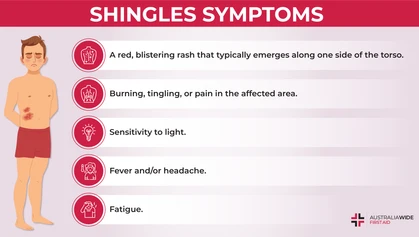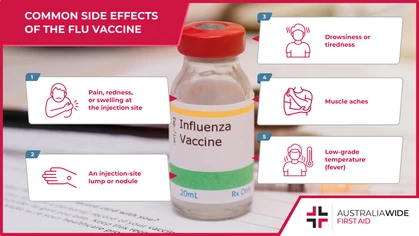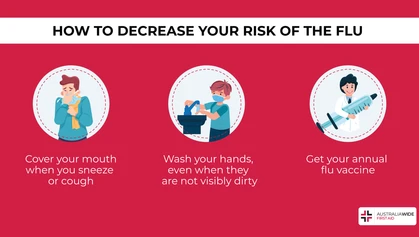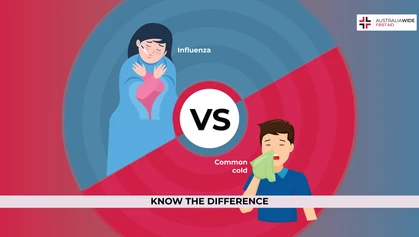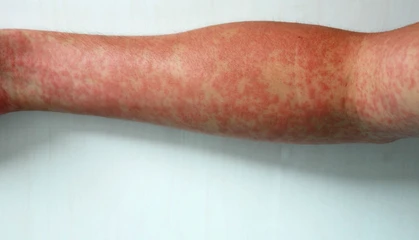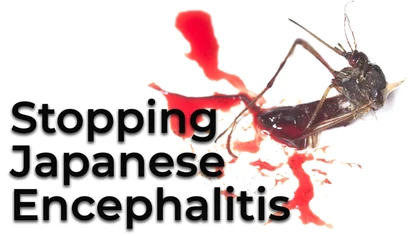What Happened to the Flu in 2020 & 2021?

Virus

The number of flu cases reported each year can vary dramatically, as the length and intensity of each flu season is rarely identical. However, both the 2020 and 2021 flu seasons were much less severe and widespread compared to pre-COVID seasons.
If it feels like the flu has been in the news a lot lately, that’s because it has. This year, the flu is hitting Australia hard. Since seasonal surveillance commenced in April 2022, there have been 368 hospital admissions due to influenza reported across sentinel hospital sites. This is because our immune systems are relatively defenceless against new strains of the flu, as the disease disappeared from the planet almost entirely for the past 2 years. Today, we are going to take a closer look at how the flu fared across 2020 and 2021, and how we can manage its vengeful return.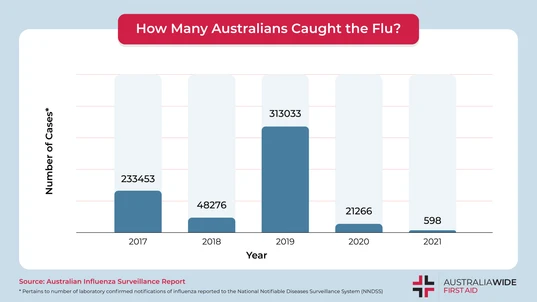
As we mentioned earlier, the number of flu cases reported each year can vary dramatically, due to the dynamic nature of each flu season. However, both 2020 and 2021 experienced unprecedented drops in the number of flu cases reported.
How Many People Caught the Flu in 2020 and 2021?
Is this article, we are mostly going to be sourcing our statistics from the Australian Influenza Surveillance Report (AISR), which is published on a fortnightly basis during the influenza season, typically between May and October. According to AISR’s National Summary for the 2020 Influenza Season, there were 21,266 notifications of laboratory confirmed influenza to the National Notifiable Diseases Surveillance System (NNDSS). This number dropped even further in the 2021 Influenza Season. According to the surveillance report for the fortnight ending 7 November 2021, only 598 notifications of laboratory-confirmed influenza had been reported to the NNDSS in the preceding year. Though the breadth and severity of flu season can change from one year to the next, given flu viruses can change their surface structure and reinfect people regularly, these figures represent mammoth drops from pre-COVID-19 case numbers. According to AISR’s National Summary on the 2019 Influenza Season, there were 313,033 notifications of laboratory-confirmed influenza to the NNDSS. As such, the number of influenza cases reported in 2020 represent a decrease of approximately 93% compared to 2019 figures. Meanwhile, the number of influenza cases reported in 2021 represent a decrease of approximately 99.8% compared to 2019 figures.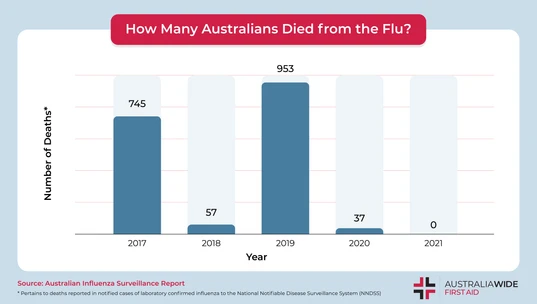
As well as the number of flu cases reported, the number of flu-associated deaths reported in 2020 and 2021 were miniscule compared to 2019 numbers. For the first time in five years, zero flu-associated deaths were reported in 2022.
How Many People Died from the Flu in 2020 and 2021?
Per AISR’s National Summary for the 2020 Influenza season, there were 37 influenza-associated deaths reported to the NNDSS in the year to date. As such, of the 21,266 influenza cases that were reported to the NNDSS in 2020, only 0.17% resulted in death. This number fell even further in the 2021 Influenza Season, with AISR’s surveillance report for the fortnight ending 7 November 2021 showing that no influenza-associated deaths had been reported to the NNDSS for the preceding year. In fact, across the country’s sentinel hospital sites, only one hospital admission due to influenza had been reported since the commencement of AISR’s surveillance in April 2021. Meanwhile, AISR’s National Summary on the 2019 Influenza Season shows that 953 of the influenza cases reported to the NNDSS resulted in death. Though this only accounts for 0.3% of the total number of influenza cases reported to the NNDSS for 2019, it still represents a 43% increase on the ratio of influenza deaths reported in 2020, and a 100% increase on the ratio of influenza deaths reported in 2021.Why did the Flu Disappear in 2020 and 2021?
Scientists widely believe that the flu all but disappeared in 2020 and 2021 due to the restrictions put in place to reduce the spread of COVID-19. This includes:Handwashing
During the height of the COVID-19 pandemic, numerous campaigns were instigated to promote the importance of handwashing as an easy but effective method for curtailing the spread of COVID-19. This includes a multimillion dollar joint initiative between Unilever and the UK government, which endeavoured to disseminate handwashing education and awareness to one billion people worldwide. The World Health Organisation applauded handwashing as a key cornerstone of COVID-19 prevention, as COVID-19 primarily spreads through direct or indirect contact with the mouth or nose secretions of an infected person. The flu is spread via similar mechanisms, so as people were handwashing to keep COVID-19 at bay, they were inadvertently staving off influenza viruses, too.Wearing Face Masks
In the face of surging COVID-19 cases, many local, state, and national governments across the globe instituted mandates whereby people entering certain private and public premises had to wear a face mask. This was because earlier studies had found that face masks could help limit the spread of seasonal influenza by stopping infected people from exhaling moisture droplets into the air. Studies conducted by the CDC in early 2022 subsequently found that people who wore respirators, surgical masks, or cloth masks had lower adjusted odds of a positive COVID-19 test, compared with their counterparts who never wore a mask. As such, just as masks were keeping COVID-19 droplets safely in the mouths and noses of infected persons, they were simultaneously keeping the air free of influenza.Closing of International Borders
Just as handwashing and face masks were brought in to stop the spread of COVID-19, inter- and intra-continental borders were closed to stop the virus from bunny-hopping between states and countries. Though COVID-19 ultimately made its way across the globe, Professor McLaws, an adviser to the WHO for COVID infection prevention and control, told the Australian Broadcasting Corporation (ABC) that domestic border closures helped some Australian states work towards eliminating COVID altogether, a process called eradication, by stopping imported cases from causing localised outbreaks. According to Professor McLaws, states that initially sought to manage COVID rather than eliminate it, such as Victoria, were forced into lockdown time and again. As such, just as the COVID-19 virus was unable to hitchhike on travellers from one state to the next, the flu was unable to feast on its usual frenzy of fresh hosts.How is the Flu Faring Now?
As most news outlets have been reporting lately, Australia’s current flu season is proving to be incredibly deadly. Since AISR commenced its surveillance in April 2022, 38,743 influenza cases have been reported to the NNDSS, and three of these have resulted in deaths. This time last year, only 294 influenza cases had been reported to the NNDSS, none of which resulted in deaths. Dr Kirsty Short, a virologist at the University of Queensland, told the ABC that we are currently more susceptible to flu viruses as we have gone a couple years “without the natural boost to our immunity that seasonal flu provides”. Likewise, Professor Ian Barr, the deputy director of the WHO Collaborating Centre for Reference and Research on Influenza, told the ABC that, due to the low number of flu cases in 2020 and 2021, it has been difficult to source samples with which to develop new flu vaccines. New flu vaccines are introduced on a regular basis, as the flu can change its surface structure and re-infect people from one year to the next.Conclusion
During the height of the COVID-19 pandemic in 2020 and 2021, the number of flu cases reported in Australia dropped dramatically. This is because the preventative measures that were introduced to reduce the spread of COVID-19, such as handwashing, wearing a face mask, and closing domestic and international borders, simultaneously reduced the spread of the flu. As we have gone a couple of years without an intensive flu season, our natural immunity against the flu is waning. As such, it is important to understand how to prevent, identify, and manage flu symptoms before they become severe. Book a first aid course near you to find out more.
Originally published at
https://www.australiawidefirstaid.com.au/resources/flu-2020-2021
as part of the Australia Wide First Aid Articles Library
